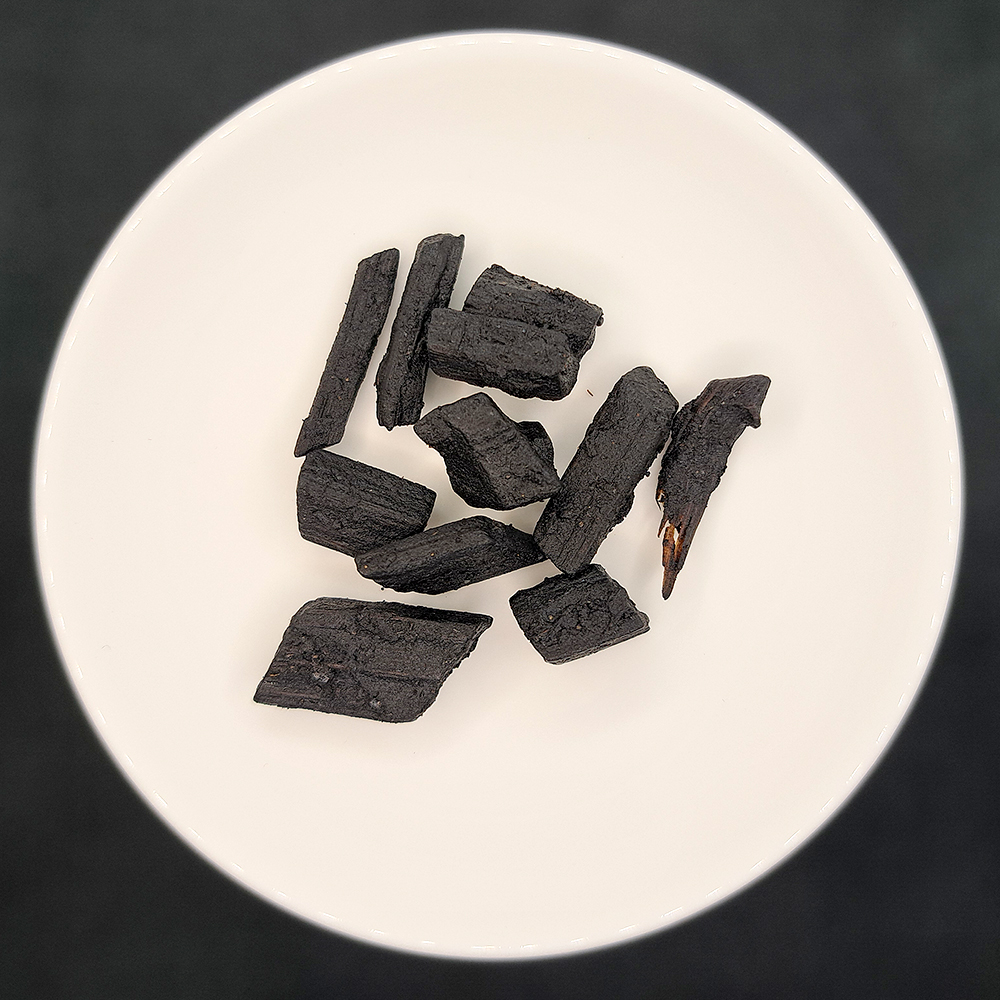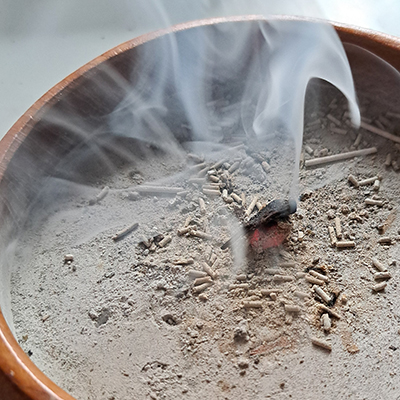Khadlaj – Munawwara
Like the other bakhoors, this sample also comes from my friend Povilas, who sent me a generous selection of samples from his collection.
Munawwara is a muattar, which is a bakhoor made of wood chips soaked in perfume oils.

Munawwara is sold in glass jars of 35g. In the Khadlaj shop, Munawwara costs €7.99; they currently ship worldwide but recommend customers outside the United Arab Emirates to contact them via WhatsApp beforehand. In other shops, Munawwara is sold more expensively; I have found prices significantly above €20 in some places.
Price per gram: from €0.23
Khadlaj lists the following fragrance notes for Munawwara:
Top notes: bergamot, musk
Heart notes: honey, rose
Base notes: cedarwood, agarwood
I use this bakhoor (as usual) on a tealight incense burner.
I notice that bergamot seems to be an extremely popular top note in bakhoor, which doesn’t exactly increase my likelihood of liking it.
I can smell the tart-fresh, citrusy note, but it’s not very dominant and, as a top note, also disappears quite quickly.
As expected, the smell of Munawwara is very perfumy. It smells floral and musky, but in a somewhat soapy way, which is especially noticeable until the fragrance has dispersed enough.
Only after reading the fragrance notes do I pick out the characteristic, sweet softness of rose in the scent. Furthermore, I can now recognise honey, but it’s not like sniffing on a jar of honey, rather like smelling a piece of honey-scented soap (e.g., Miel Acacia from Le Chatelard 1802).
I assume the wood chips used might be cedar, but I think I also smell some cedar oil towards the end.

Because I repeatedly hear or read that muattars need more heat than (most) electric and tealight incense burners generate, I have also tested Munawwara burnt on charcoal.
I use a non-self-igniting charcoal based on coconut husks.
Apart from the strong smoke development, the most obvious difference is a change in the character of the smell: the fragrance notes no longer appear one after the other, but everything happens at once. This makes the smell seem a bit rounder and more cohesive, but at the same time somewhat blurry.
Furthermore, the scent no longer reminds me so strongly of perfume; it smells unsurprisingly more like incense, and the soapy note doesn’t seem to come through as strongly as on the burner either.
I didn’t expect to find the bergamot scent reappearing in the after-smell. It’s followed by the sweet honey aroma. I prefer the after-smell to the smell during burning, but Munawwara still doesn’t quite suit my taste.
Does Munawwara smell better when burnt on charcoal?
I don’t know, but it certainly smells different.
A chip on the charcoal burns to ash within a few minutes. On a burner, a piece of bakhoor can easily remain for half an hour or longer until it is finished.
I’m slowly gaining the impression that muattars in general don’t suit my taste. That being said, I have one or two samples that smell very promising, at least from the tin; these are, however, not oily-wet but dry (unlike Munawwara and the others tried so far).

I am fascinated by bakhoor, and bought a bundle a while ago, but then never got around to reviewing them. And now there’s also muattar to look into!
The world is full of fascinating largely unexplored incense!
Thanks for bringing this to our attention, Irene.